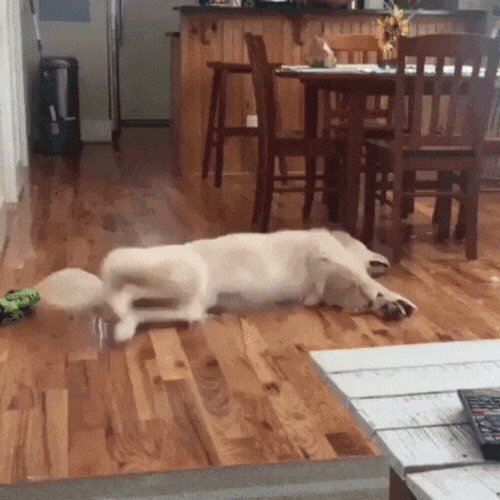We frequently ponder, “What do dogs think about?” and if they are actually dreaming as we watch them slumber. Do they make cute noises while they sleep or do their paws or tails wag? Both pet owners and scientists have been interested by this curiosity concerning canine dreams. We’ll dive into the interesting world of canine sleep in this blog post and consider the question: Do dogs dream?
Let’s first examine dog sleep habits before exploring the world of canine dreams. Similar to humans, dogs also experience REM and NREM sleep, the two main sleep categories. Stage 4 of NREM sleep, which is the deepest stage, is further broken into stages 1 through 4.
Both people and dogs experience increased brain activity during REM sleep, which is the period connected to dreaming. Dogs show physical symptoms, including twitching, wagging their tails, and making noises only during REM sleep. Dogs definitely experience REM sleep, according to research utilizing electroencephalography (EEG) to track brain activity during sleep in dogs.

Although we are unable to ask dogs directly about their dreams, their REM sleep activity points to vivid mental experiences. Dog dream patterns have been the subject of tests by researchers. One study found that dogs frequently display dream-like activities that mirror their waking experiences. For instance, herding breeds may display actions imitating rounding up cattle, whereas hunting breeds may display running or chasing behaviors.
The same study also revealed that dogs’ dreams appeared to be influenced by their everyday activity. Dogs who had received agility training were more likely to engage in jumping or negotiating obstacle-related dream behaviors. These results suggest that dogs may dream about familiar activities and events during their waking hours.
Similarities to Human Dreaming:
The parallels between canine and human dream experiences further support the case that dogs dream. Dogs and humans both have sophisticated minds and snooze in similar ways. The hippocampus and amygdala, two brain regions involved in creating and controlling dreams, are also present in dogs.

In addition, scientific data supports the theory that dogs dream. Many dog owners have reported seeing their dogs engage in sleep-related behaviors that match those they see them doing in the daytime, such as chasing a ball or obeying directions. These first-person stories highlight the emotional and cognitive complexity of the canine mind and provide credence to the idea that dogs occasionally enter dream-like states.
The existing scientific evidence clearly supports that dogs do dream, even though we cannot fully understand a dog’s dream or directly ask them about their experiences. According to their REM sleep patterns and observed activities that resemble awake states, dogs appear to have active minds even while they sleep. We shall be able to comprehend and appreciate the complexity of this intriguing topic as a result of additional research on canine sleep and dreaming.

One reply on “Dog Dreaming: What You Should Know As A Pet Parent“
Comments are closed.